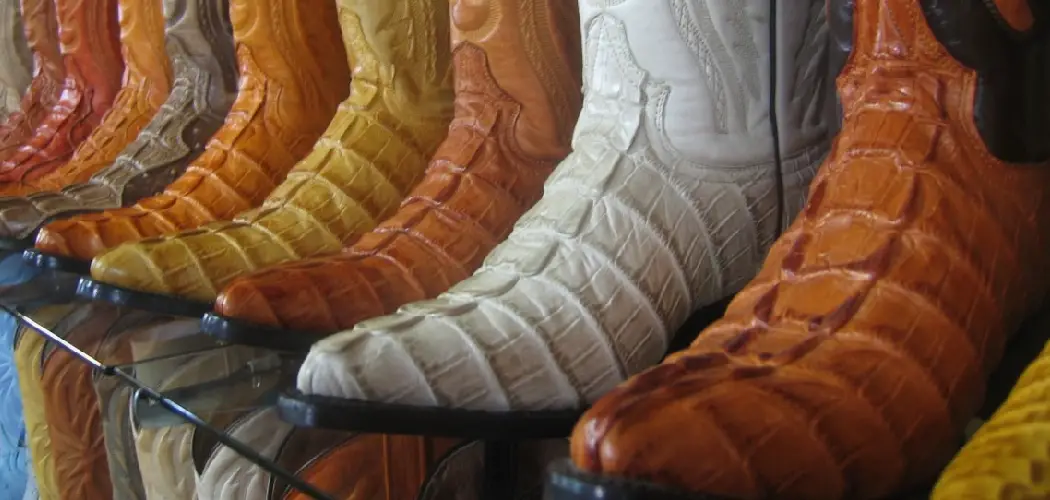Leather boots are a classic fashion statement and as any stylish person knows, quality leather shoes can last for years if treated with care. But when it comes to ensuring that your favorite pair of leather boots stand the test of time, storing them correctly is essential.
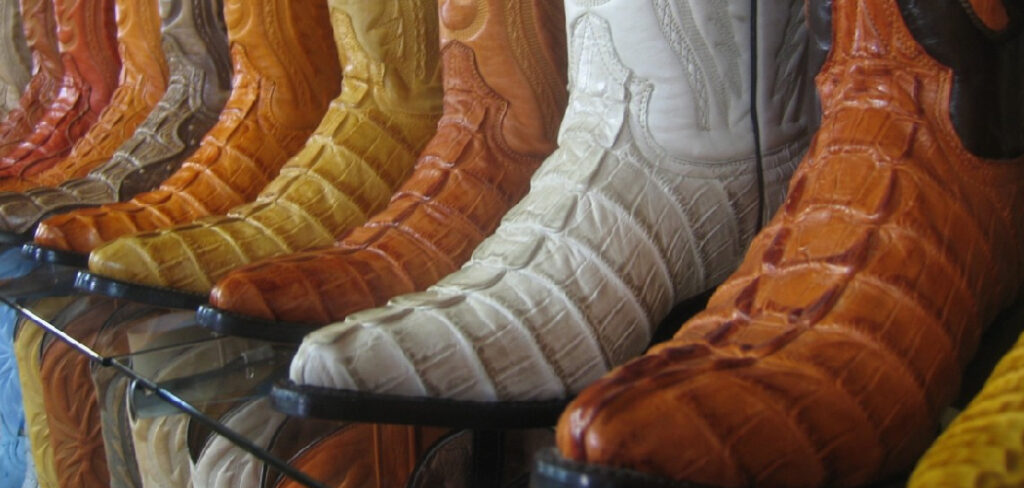
Storing your boots correctly can help avoid cracking and excess wear over time, saving you money in the long run! In this post, we’ll discuss some key tips on how to store leather boots properly so you can keep them looking their best for years to come.
Why Do You Need to Store Leather Boots?
Leather boots are prone to cracking and damage due to their delicate material. Maintaining the proper moisture level in your leather boots is key for keeping them looking their best.
If you don’t store your leather boots correctly, they can become dry and brittle, resulting in cracking or even breaking. Additionally, if stored improperly, leather might start to lose its color, fade or become brittle over time.
Necessary Materials
Given below are the necessary materials you need to store your leather boots:
A Soft Cloth or Brush
This is used to wipe down the surface of the leather, removing any dirt or dust before storage.
Leather Conditioner and/or Protector
This helps keep your boots soft and supple, preventing cracking from dryness.
A Box or Dust Bag
A box or dust bag helps protect the leather from outside elements such as dust, dirt, moisture and pests.
12 Step by Step Guide on How to Store Leather Boots
Step 1: Clean the Surface
Before storing your leather boots, use a soft cloth or brush to wipe down the surface and remove any dirt or dust that has accumulated on them. This is an important step as it helps keep the boot material clean and prevents it from becoming dry and brittle. If you don’t have a soft cloth or brush, you can use a damp cloth to remove dirt and debris.

Step 2: Condition the Leather
Once you have wiped down the surface, it is important to condition the leather using a quality leather conditioner or protector. This helps preserve the leather and keep it soft, preventing cracking due to dryness. Follow manufacturer instructions when applying any conditioning products.
Step 3: Stuff Them with Newspaper
To help maintain their shape and prevent creases, stuff your boots with newspaper before storing them away. This will also help absorb any excess moisture in the boots so they don’t become too damp while stored away. But make sure to use un-inked newspaper, as the ink can damage the leather.
Step 4: Place Boots in a Box or Dust Bag
Once you have conditioned and stuffed your leather boots, place them into a box or dust bag for storage. This helps protect them from outside elements such as dust, dirt and pests. But make sure the box or dust bag is large enough to accommodate your boots with plenty of room to breathe.
Step 5: Store in a Dry Place
When storing your leather boots, it is important to keep them in a dry place away from extreme temperatures and direct sunlight. The ideal temperature should be kept around 60-70°F (15-21°C). Storing your leather boots in a cool, dry place will help preserve the material and prevent cracking due to dryness.
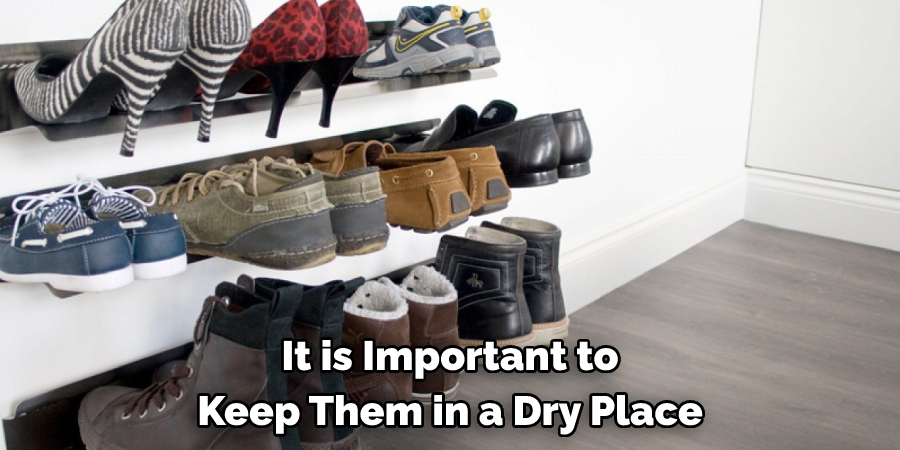
Step 6: Avoid Moisture Buildup
Moisture can cause damage to leather over time, so it’s important to avoid moisture buildup when storing them away. Make sure that any area where you store your boots has adequate air circulation so moisture doesn’t become trapped inside. This will ensure your leather boots stay in good condition for many years.
Step 7: Monitor Boots Periodically
Every couple of months, check on your leather boots to make sure that they are still in good condition and free from any signs of deterioration or damage. If the boots look dry or brittle, apply a quality leather conditioner to help keep them soft and supple. It’s also important to stuff them with newspapers on a regular basis to help maintain their shape.
Step 8: Remove from Storage Regularly
Leather is a natural material that needs to “breathe” in order to stay healthy and vibrant. Make sure you remove your boots from storage regularly (at least once every two weeks) and allow them some time out of their box or dust bag in order for the material to breathe properly. If possible, alternate between different pairs of boots while taking them out of storage to give the material a break.
Step 9: Use Shoe Trees
Shoe trees help keep the shape of your boots in check and also help to absorb any moisture that accumulates inside. For best results, use shoe trees made from cedar as this material is known for its natural ability to absorb excess moisture. It’s also important to make sure the shoe trees fit your boots snugly in order for them to have maximum effect.
Step 10: Wear Protective Insoles
Wearing protective insoles when wearing leather boots will help protect them from damage due to sweat and moisture buildup on the inner surface. This can also help reduce odor caused by foot perspiration. It will help keep your leather boots in good condition for many years to come. But make sure the insoles fit your boots snugly in order for them to be effective.
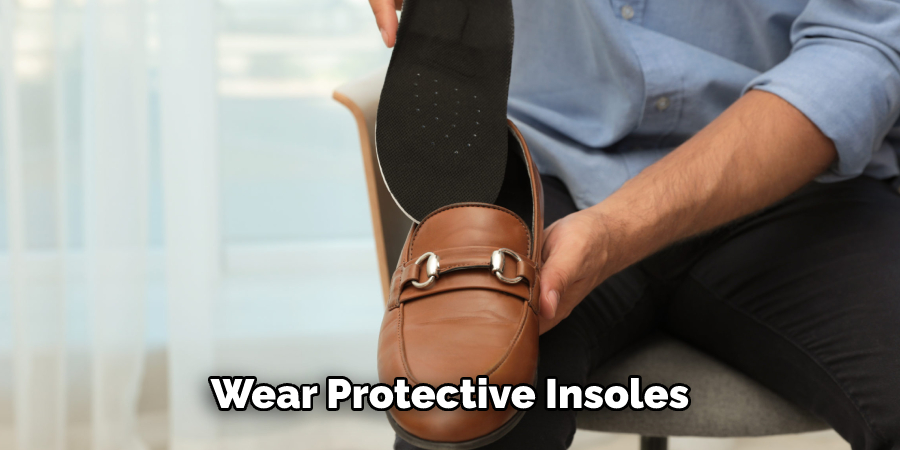
Step 11: Rotate Boots Regularly
Rotating your leather boots regularly (two or three times per week) helps evenly distribute wear and tear throughout each boot, resulting in a longer life span of the material. After each wear, make sure to stuff them with newspaper and condition the leather to help keep them looking like new.
Step 12: Keep Away from Direct Sunlight
Direct sunlight can cause discoloration, fading and cracking to leather over time so it’s important to keep them away from direct sunlight when storing them. If you must store your boots in a place that receives direct sunlight, make sure to cover them with a cloth or dust bag for extra protection.
Following these steps on how to store leather boots will help ensure that your leather boots remain in good condition for years to come. With proper maintenance and care, you’ll be able to enjoy wearing your well-loved pair of boots for many years!
Do You Need to Hire a Professional?
If you’re unsure of how to properly store your leather boots, it’s always a good idea to hire a professional to make sure they are properly cared for. A professional cobbler or shoe care specialist will know exactly how to condition, stuff and store your leather boots in order to keep them looking their best. But if you’re confident in your own ability to store them properly, then you can certainly do it yourself. With a little bit of care and attention, you’ll be able to enjoy wearing your leather boots for years to come!
How Much Will It Cost?
The cost of hiring a professional to store your leather boots will vary depending on the complexity of the task and the rates set by the particular cobbler or shoe care specialist. Typically, shoe repair services run anywhere between $25 – $50 per hour, so make sure to shop around and compare prices before making any decisions.
With proper storage techniques, you can enjoy wearing your leather boots for years to come! Taking a few extra steps now will help ensure that your boots last as long as possible – and save you money in the long run. With some basic care and attention, you’ll be able to keep them looking their best for many seasons to come.
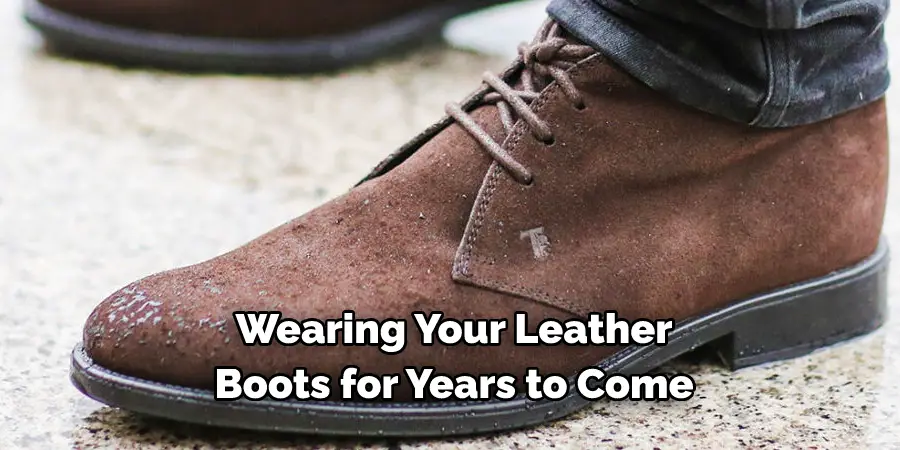
Frequently Asked Questions
Q: How Often Should Leather Boots Be Stored?
A: Leather boots should be stored in a cool, dry place away from direct sunlight for optimal protection. They should also be removed from storage and allowed to “breathe” at least once every two weeks.
Q: What Is the Best Way to Store Leather Boots?
A: The best way to store leather boots is in a cool, dry place away from direct sunlight. Make to stuff them with newspaper or tissue paper and use shoe trees to help keep the shape in check and absorb any moisture that accumulates inside. Finally, use a protective insole when wearing your boots to help protect them from damage due to sweat and moisture buildup on the inner surface.
Q: What Should I Avoid When Storing Leather Boots?
A: You should avoid storing your leather boots in direct sunlight as this can cause fading, discoloration, and cracking to the leather over time. You should also avoid storing them in a damp or moist environment as this can cause damage to the material.
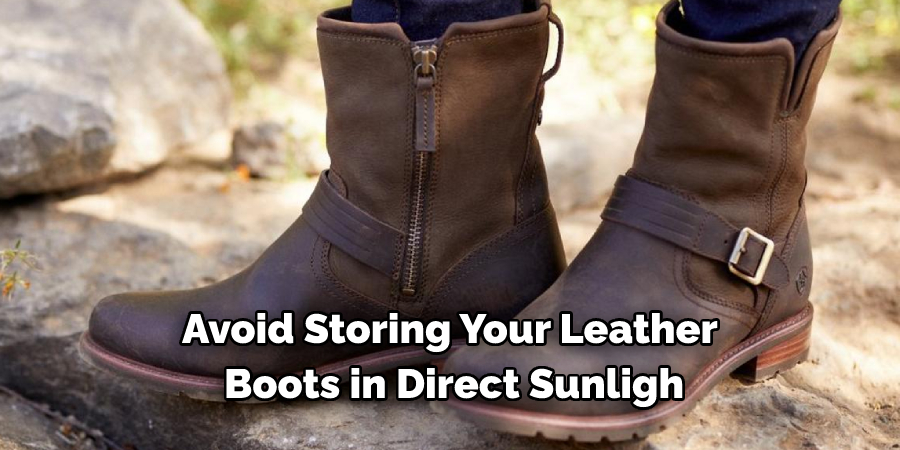
Conclusion
Storing your leather boots correctly can not only prolong their life but also add to the aesthetic of your wardrobe. While it may seem like a daunting task, getting into the habit of taking care of your leather boots ensures that you’ll be able to enjoy your favorite pair for much longer. If regular maintenance isn’t something you have time for, simply shellacking them with a waterproof sealant can save them from potential damage.
And if all else fails, breaking out the old toothbrush and airing out those bad boys is sure to get the job done when it comes to preserving the integrity of your leather boots! So take some precautionary steps now and don’t forget that keeping your boots in optimal condition pays off in longevity!
When all is said and done, there’s nothing quite like pulling off a classic look made perfect by a flawless set of leather boots – so make sure to take proper steps on how to store leather boots today so you can sport that same style for years to come!

